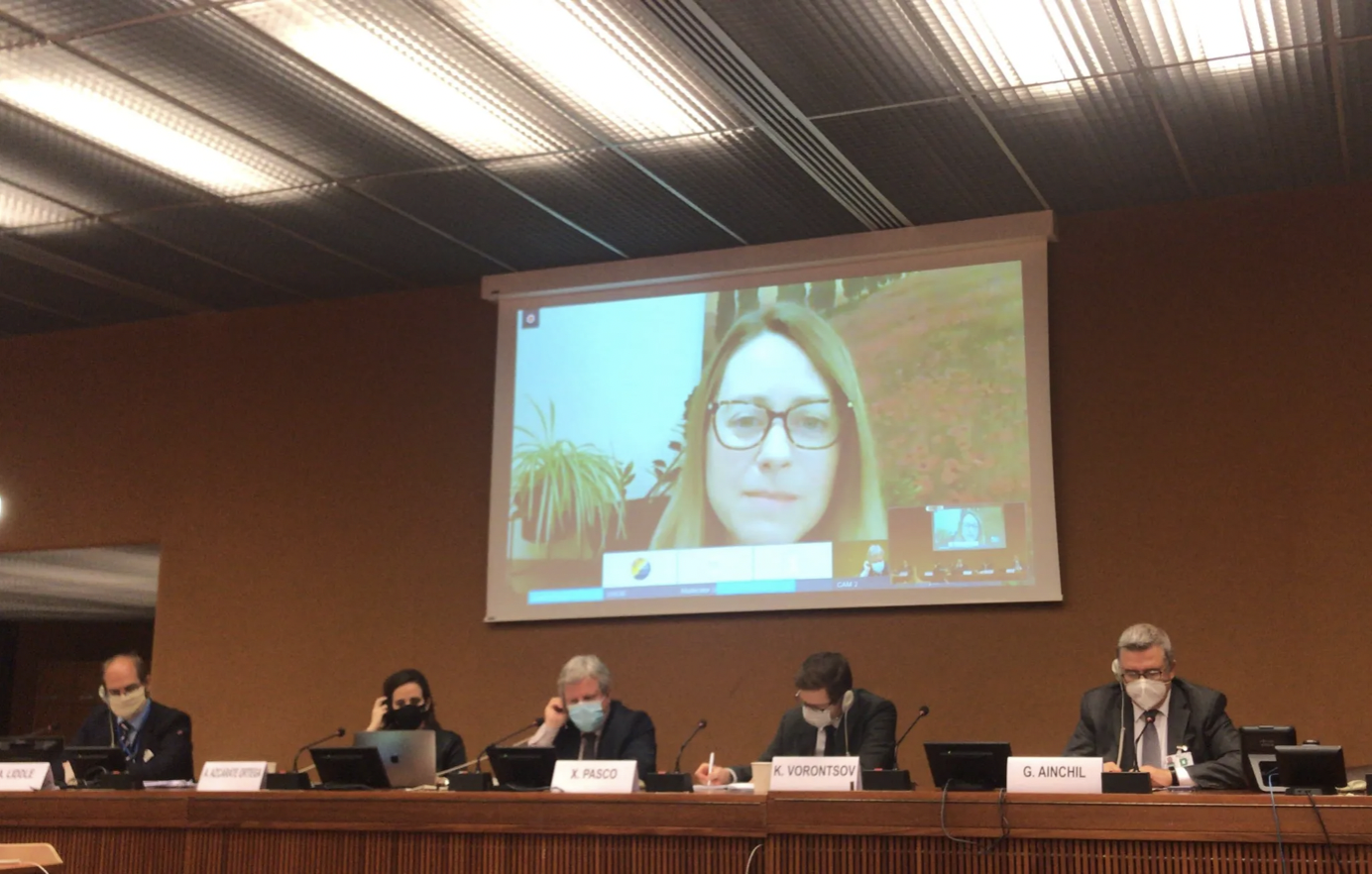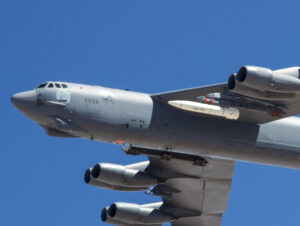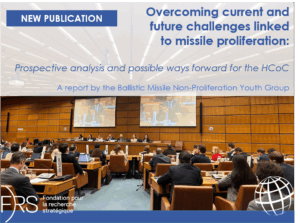Non-binding norms and Transparency and Confidence-Building Measures
28 September 2021
Virtual
This panel was part of the United Nations Institute for Disarmament Research (UNIDIR) 2021 Space Security Conference, which took place from 27 to 28 September at the Palais des Nations in Geneva.

AGENDA
MODERATOR:
- Xavier PASCO, Fondation pour la Recherche Stratégique
PRESENTERS:
- Amb. Aidan LIDDLE, Ambassador and Permanent Representative, United Kingdom Delegation to the Conference on Disarmament in Geneva
- Amb. Gustavo AINCHIL, Ambassador and Permanent Representative of the Argentine Republic to the International Organizations in Vienna, HCoC Chair, Argentina
- Jessica WEST, Senior Researcher, Project Ploughshares
- Jinyuan SU, Professor of International Law, Wuhan University
- Konstantin VORONTSOV, Acting Deputy Director, Department for Non-Proliferation and Arms Control, Ministry of Foreign Affairs, Russian Federation
Summary of the debates
Xavier PASCO (FRS) moderated the session and reminded participants of the importance of regulating current space developments. He mentioned the relevance of the HCoC as a multilateral forum to provide lessons for additional non-binding measures dedicated to space.
In the first presentation, Amb. Aidan LIDDLE opened by noting that voluntary and legally-binding measures are not a binary choice: they can be combined and reinforce each other. He assessed that Resolution 75/36 ‘Reducing space threats through norms, rules and principles of responsible behaviours’, very useful in this regard, is not just about non-legally binding norms and could lead to future negotiations on binding instruments as well. He recalled the importance of the 2013 United Nations Group of Governmental Experts (UN GGE) Report on Transparency and confidence-building measures (CBMs), which notes that the main point of CBMs is to share information in different ways. Non-binding norms may be useful as stepping stones to building negotiations, or as solutions to space security problems themselves. They are flexible, which is useful in the context of a rapid changing environment and to adapt to dual-use technologies. Beyond monitoring behaviours, they can constitute tools of escalation management, dialogue platforms to clarify intent or capacities, and a powerful instrument to manage competition in the space domain.
Second, Amb. Gustavo AINCHIL recalled that to build security instruments, the engagement of key actors (possessing relevant technologies) and the development of a shared understanding are essential, beyond the content itself of the instruments. The parties should see value in terms of national and collective security. He also remarked that trust and confidence are at the centre of any process, and have to be built. The HCoC is a good example, because of the way in which it was negotiated and the balance: securing the participation of key actors, on the one hand, having a specific focus on some systems while retaining a degree of flexibility, on the other. It could be taken as example for progress in the space domain if the right conditions are met and if discussions regarding TCBMs in space are not detrimental to the existing architecture. He pointed out that the voluntary nature of an instrument is not necessarily problematic if political will to implement it is there. Finally, involving actors meaningfully in the instrument’s development and implementation has more impact and should therefore be prioritised over simply looking at the recorded number of votes in favour of it.
Third, Jessica WEST focused her presentation on two dimensions, norms and behaviours. The effort to switch the conversation from capacities to behaviours started in the 1990s and is still relevant today, to prevent conflict escalation and resorting to the use of force. Behaviour setting can also be linked to restraint on the use, testing, targeting of some categories of systems… But these initiatives need to have clear objectives to avoid misunderstandings on the processes; moreover, different parties may have different views. Second, there are limits on norms as well and it is useful to consider them as platforms for the creation of formal legally-binding instruments.
Jinyuan SU then emphasised that within space, some rules regulate military activities directly, while others do so indirectly – by limiting the effects of activities in outer space. Some of the proposals made currently may enter either categories, while the ‘responsible behaviour’ proposition set in Resolution 75/36 may concern both categories. Non-legally binding rules are important and may reinforce legally-binding norms, which remain the priority. Indeed, they cannot solve major security problems, which are also dependent on the more general security environment globally, as many issues are entangled between space developments and developments happening in other domains.
Finally, Konstantin VORONTSOV supported the views that the role of TCBMs needs to be defined in the context of PAROS and in the more comprehensive context of international security. As the militarisation of space is ongoing, efforts to maintain space as a place for peaceful purposes are increasingly relevant, especially through legally-binding instruments, as suggested by proposals made by the Russians and Chinese about the TPNW. That being said, this approach is compatible with TCBMs and both categories of norms could support each other. TCBMs could especially play a role as intermediary steps to provide security as negotiations on a more global treaty are pursued, a position made by the GGE Report on TCBMs in 2015. They should aim for a ban on the placement of weapons in outer space and for a ban on the destruction of space assets. A key TCBM is the political commitment on the no-first placement (NFP) of weapons in outer space, a proposal which is supported by a great majority of UNGA members. Importantly, national actors can lay the ground for the adoption of TCBMs by implementing best practices in space on a voluntary basis.


